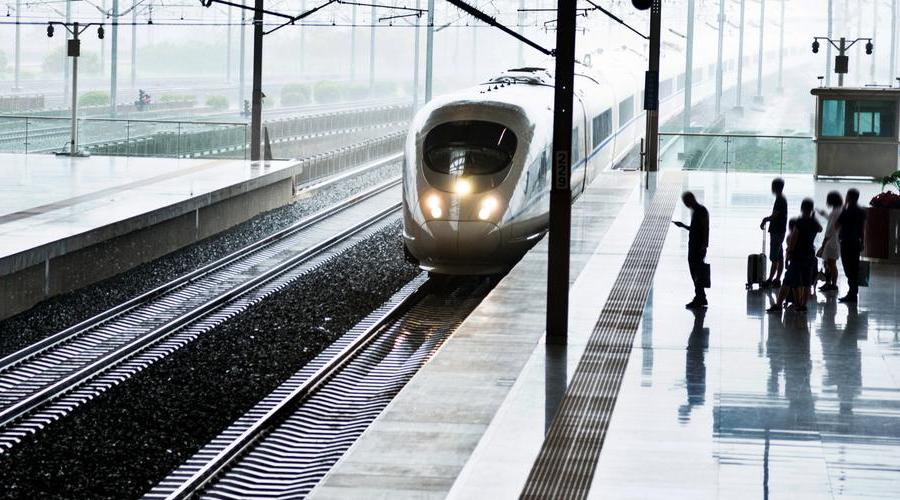
(5 min read)
The UK Government is consulting on a revised Ports National Policy Statement (NPS), updating the 2012 version to reflect changes in legislation, trade, technology, and climate priorities. The draft NPS reaffirms the need for significant port capacity expansion over 30 years, supporting trade, offshore energy, and regional economies, with a presumption in favour of development. Key updates address decarbonisation, biodiversity net gain, marine net gain, air quality, and resilience. However, it lacks clarity on infrastructure for Floating Offshore Wind (FLOW) and alignment with the Planning & Infrastructure Bill. Criticism includes outdated references and insufficient guidance on navigating complex environmental regulations. Stakeholders have until 29 July 2025 to provide feedback.
Background
NPSs are designated under the Planning Act 2008 and set out Government policy on specific types of nationally significant infrastructure. The NPS provides the framework for decision-making on nationally significant infrastructure projects (NSIPs) in the ports sector in England and Wales and is an important and relevant consideration for all consenting bodies granting other types of port-related consents.
The Ports NPS was the first NPS to be published and is now by the far oldest (dating back to 2012).
The purpose of a NPS is also to set out the national need for infrastructure. In the case of the Ports NPS the NPS identifies the need for additional port capacity to support the UK’s trade and transport requirements. The NPS acknowledges the importance of ports in facilitating imports, exports, and supply chains, as well as their role in regional economies. Where need is established in a NPS, then individual developments meeting that need do not have to make the case for the development – only deal with the relevant impacts assessment.
Current NPS
The current Ports NPS does not prescribe specific locations or types of port development but leaves it to developers to demonstrate how their proposals meet national or regional needs.
The Ports NPS, in common with all NPSs outlines the information that developers must include in their applications, such as environmental impact assessments, socio-economic studies, and mitigation plans. Such impacts include those on biodiversity, air quality, noise, and climate change. It provides criteria for evaluating the acceptability of proposals but does not dictate specific project designs or approaches.
The Ports NPS acknowledges that port developments can have significant localised impacts and requires developers to engage with affected stakeholders and propose mitigation measures but seeks to balance those impacts with the economic benefits of port development. Developers are required to provide evidence of how they have minimised adverse impacts and, where relevant, considered alternatives.
Consultation
The consultation invites stakeholders to review the draft amendments and provide feedback on whether the proposed changes meet the intended objectives. The deadline for responses is 29 July 2025.
The main objectives of the consultation / the revision of the Ports NPS are to update the policy framework bearing in mind the current NPS was developed over a decade ago, and since then, there have been significant changes in legislation, policy, and the operating environment for ports. The amendments also aim to account for changes in trade patterns, technological advancements, and the evolving role of ports in supporting supply chains and the economy.
Unsurprisingly, the amendments seek better alignment with recent Government Priorities:
- Decarbonisation: Supporting the transition to cleaner energy and reducing emissions from port operations and associated transport to meet the commitment to achieve net zero greenhouse gas emissions by 2050 and other climate change targets.
- Regional growth: Promoting regional economic growth by ensuring ports contribute to local and national prosperity.
- Resilience and Security: Enhancing the resilience of port infrastructure to external shocks, including economic disruptions and climate change.
Notable Areas of Change / Consistency in the Draft Ports NPS
Need:
- The draft Ports NPS restates the position from the current NPS that there is a compelling need for substantial additional port capacity / development over the next 30 years, to be met by a combination of development already consented and development for which applications have yet to be received. This need arises from the need to enable long-term forecast growth in volumes for all commodity types; support the development, operation and maintenance of offshore energy; provide a sufficiently wide range of facilities; respond to the wider needs of the freight and logistics sector, facilitating modal shares; ensure effective competition between ports as well as substantial resilience; and contribute to local and regional economies.
- Presumption in favour: the draft Ports NPS reasserts the continuing urgency of the above need and starts that there should be a presumption in favour of granting consent for ports development.
- The ‘already consented development’ the draft NPS refers to are the remaining consents at Bathside Bay, London Gateway, Teesport and Bristol. Somewhat unhelpfully, the draft states that if all of those schemes were built out, aggregate container capacity would be broadly in line with the ‘pre-recession forecast for demand’. The reference to recession here is a reference to the recession of 2008 / 9 which intervened between the demand forecasts for the previous NPS and its subsequent adoption in 2012 – this is an unnecessary historical hangover and should be removed / updated given major trade events since then and the availability of DfT forecasts from 2025. The draft recognises that additional / alternative developments might be beneficial for competition / flexibility and this is important in order not to close the door on a supportive need case for new container development.
- The draft NPS strongly reasserts that it is Government policy to encourage the total port capacity in any sector to exceed forecast overall demand if the ports sector is to remain competitive and resilience.
Location:
- Despite some requests to venture into the territory of picking winners and losers to facilitate greater certainty in preparing the ports sector to meet the demands of Floating Offshore Wind (FLOW) on the west coast of Britain, the draft NPS resolutely retains the non-locationally specific nature of Government Ports policy.
Offshore wind:
- The draft NPS confirms that ports are expected to play a pivotal role in supporting the transition to net zero, including the adoption of low-carbon technologies and fuels and that there is a strong public interest in enabling ports to services offshore developments. It notes that FLOW will require bespoke port facilities. However, unfortunately there is no categorisation in the draft NPS of that necessary port infrastructure comprising ‘Critical National Priority’ (CNP) infrastructure to mirror the approach to the actual offshore infrastructure itself, and its associated cabling, that is adopted in the Renewables NPS (EN-3). This means that offshore wind supporting port development will continue not to benefit from the enhanced status that CNP provides in meeting some of the tests applicable for development. This is a missed opportunity.
Assessment:
- Largely, the assessment provisions remain very similar in the draft NPS to those in the current Ports NPS. The main amendments focus on those to reflect updated environmental legislation, including the Environment Act 2021 and biodiversity net gain considered in more detail below. There is also additional content on the procedural aspects of Habitats Regulations Assessment and an emphasis on compliance with the mitigation hierarchy when it comes to dredging. Less obviously there is additional content in relation to ancient woodland / trees, not commonly an issue in port development.
Air quality:
- The draft NPS includes greater provision regarding air quality. Reporting requirements in the ES are more fulsome and more materially, the decision-maker should consider whether mitigation measures put forward by the applicant are acceptable. In doing so, the decision-maker should have regard to relevant guidance including within the Air Quality Strategy or any successor to it, Local Air Quality Management guidance and any available DEFRA PM2.5 target guidance. The draft NPS provides that where a project is likely to lead to a breach of any relevant statutory air quality limits, objectives or targets, the developers should work with the relevant authorities to secure appropriate mitigation measures to allow the proposal to proceed. If a project will lead to non-compliance with a statutory limit, the decision-maker should refuse consent where, after taking into account mitigation, the air pollutant emissions resulting from the proposed scheme will either:
- result in a zone/agglomeration which is currently reported as complying with the Air Quality Standards Regulations 2010 becoming non-compliant; or
- seriously adversely affect the ability of a non-compliant area to achieve compliance within the most recent timescales reported to the Examining Authority at the examination.
- That said, conversely the draft NPS does also say that any increase at all in air pollutant emissions is not a reason in itself to refuse development consent, though any deterioration in air quality should be given appropriate weight in coming to the decision. All this will put more focus on considerations of onshore electrical power (cold ironing).
Biodiversity:
- The draft NPS aligns with the Environment Act 2021 requirements for biodiversity net gain (BNG). Port developers are expected to incorporate BNG into their planning and decision-making processes. This involves assessing the impact of port developments on biodiversity and ensuring that any losses are compensated by measurable gains. Developers must undertake robust baseline biodiversity surveys and are required to minimise biodiversity loss through mitigation measures where possible. BNG can be delivered on-site or wholly or partially off-site. Developers are encouraged to set out details of any proposed on-site or off-site biodiversity gains within the application for development consent. When delivering BNG off-site, developments should do this in a manner that best contributes to the achievement of relevant wider strategic outcomes, for example by increasing habitat connectivity or enhancing other ecosystem service outcomes. Reference should be made to any local nature recovery strategies (which should be the primary reference point for those delivering BNG off-site) and other relevant national or local plans and strategies, such as green infrastructure strategies, used to inform BNG delivery.
- Habitat creation or enhancement packages proposed for the purposes of delivering biodiversity net gain should be secured on a long-term basis, for at least 30 years.
- Developers are encouraged to establish mechanisms for monitoring and reporting biodiversity outcomes over the lifetime of the port development to ensure compliance and effectiveness.
Marine Net Gain:
The draft NPS highlights the Government's ambition to introduce a marine net gain (MNG) approach, which extends the principles of BNG to the marine environment. MNG focuses on delivering positive outcomes for marine biodiversity and ecosystems. It is likely that MNG will ultimately function along the same lines as the credits aspect of BNG. The draft NPS acknowledges that the MNG framework is still under development and states that future guidance will provide clarity on how developers can achieve MNG as part of port projects.
While the framework is being finalised, developers are encouraged to consider opportunities for MNG voluntarily. This includes identifying measures to avoid, mitigate, and offset impacts on marine biodiversity. MNG is positioned as complementary to existing marine and coastal policies, such as the UK Marine Strategy and Marine Plans. Developers are expected to align their proposals with these broader objectives.
Interaction with the Planning & Infrastructure Bill and Missed Opportunities
It is understood that the draft NPS has been completed and ready to go to consultation for some time, as such it is perhaps not surprising that the draft NPS does not really read across to the changes to the NSIP process to be introduced in Planning & Infrastructure Bill, which is currently before Select Committee in the House of Commons. In particular, the interaction with the proposed new Environmental Delivery Plans (EDP) and Nature Restoration Levy proposed in that Bill is not covered. For example, it is presently not clear whether EDPs would provide a model for or supersede the ideas for MNG.
Lastly, the draft NPS could do more to guide applicants and decision-makers through the interplay and balance amongst the myriad of environmental plans and designations that are now in place which give the marine context such extraordinary complexity. We now have, to name just some: Marine Protected Areas, Highly Protected Marine Areas, the Water Framework Directive Regulations (and associated EA guidance ‘Clearing the Waters for All), the Marine Strategy Regulations, the Environmental Targets (Marine Protected Areas) Regulations 2022 and the Environmental Improvement Plan 2023 targets for designated features in MPAs. Most of this gets a name drop in the draft NPS, but no stringing together of all these different threads to aim for a simpler and more cost-effective consenting journey. That said, perhaps this requires legislative change – another area for the Bill maybe.




